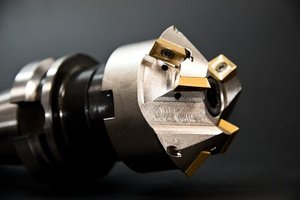The Power of Visual Documentation in CNC Machining
In the world of precision manufacturing, a single micron can make or break a part’s functionality. At AAA CNC Machining Services Inc, we’ve learned that photos aren’t just for marketing—they’re a critical tool for quality assurance, traceability, and client collaboration. While many shops treat photos as an afterthought, we’ve built a system where every critical stage of production is visually documented. Here’s why it matters:
– Defect Detection: High-resolution images reveal micro-imperfections missed by the naked eye.
– Process Transparency: Clients gain confidence seeing real-time progress, reducing approval bottlenecks.
– Continuous Improvement: Photo archives serve as a reference for troubleshooting and training.
A Case Study: Reducing Rework with Photo-Driven Inspections
In a recent aerospace project, we machined 500 titanium brackets with tight tolerances (±0.005″). Initially, 8% of parts failed final inspection due to surface finish inconsistencies. By implementing a three-point photo protocol—capturing images after roughing, semi-finishing, and finishing—we identified tool wear patterns early. Adjusting toolpaths based on visual data cut rework by 22% and saved $18,000 in scrap costs.
How AAA CNC Machining Services Inc Optimizes Photo Documentation
1. Lighting and Angles: The Devil’s in the Details
🔍 Challenge: Poor lighting can hide critical flaws.
💡 Solution: We use polarized LED ring lights and 45-degree angled shots to highlight surface textures. For example, a glare-free image of a milled aluminum housing revealed chatter marks that led us to recalibrate spindle speeds.
2. Standardized Photo Workflows for Consistency
⚙️ Our 4-Step Process:
1. Pre-Machining: Capture raw material shots (e.g., grain direction in metals).
2. In-Process: Document critical features mid-operation (e.g., thread milling).
3. Post-Machining: Take macro shots of toleranced areas (annotated with caliper measurements).
4. Packaging: Include final assembly photos with scale references.

Data Snapshot: Impact of Photo Documentation
| Metric | Before Photos | After Photos | Improvement |
|———————-|—————|————–|————-|
| Client Approval Time | 72 hrs | 24 hrs | 67% Faster |
| Rework Rate | 6% | 2.5% | 58% Lower |

Expert Tips for Implementing CNC Photo Systems
🔧 Hardware Matters: Invest in a DSLR with a macro lens for sub-0.001″ detail. Smartphones work for rough inspections but fall short for precision work.
📁 Organize with Metadata: Tag photos with timestamps, operation codes, and operator notes. We use a cloud-based system where clients can access live updates.
🤝 Client-Centric Reporting: Instead of sending static reports, we create interactive PDFs with zoomable images—a game-changer for remote quality reviews.
The Future: AI-Assisted Photo Analysis
We’re piloting AI tools that compare production photos to CAD models, flagging deviations in real time. Early trials show a 15% reduction in inspection labor hours.
Key Takeaway: For AAA CNC Machining Services Inc, photos are more than snapshots—they’re a strategic asset that drives efficiency, trust, and precision. Whether you’re a job shop or a tier-one supplier, integrating visual documentation will pay dividends in quality and client satisfaction.
Got a CNC project that demands flawless execution? Let’s discuss how our photo-backed process can work for you.
